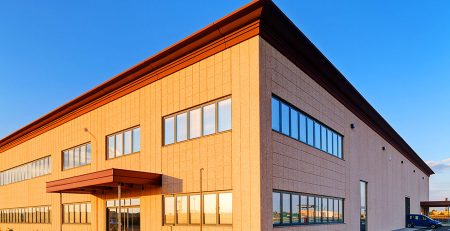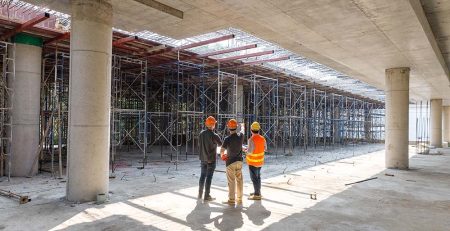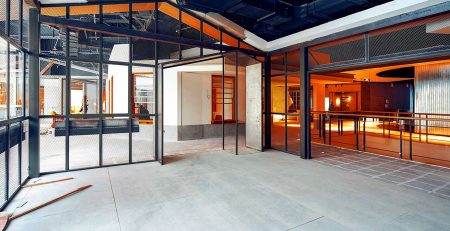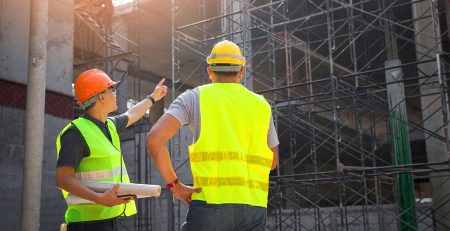How to Ensure Safety? Advances in Construction Protocols
In the ever-evolving landscape of construction, safety remains the bedrock of industry standards. With both workers’ lives and the integrity of architectural endeavors at stake, advancing safety protocols isn’t just a regulatory compliance matter—it’s a moral imperative. This blog explores how the construction industry has ramped up safety measures through technology, training, and innovative practices, ensuring safer work environments and superior project outcomes.
The Evolution of Safety in Construction
Traditionally, construction has been one of the most hazardous occupations, exposed to the vagaries of both human error and environmental unpredictability. Today, however, the industry stands transformed by technological advancements and stringent regulations that protect those who build the world around us. From the days of rudimentary safety measures to the current high-tech protocols, the journey has been significant.
Modern Safety Standards and Regulations
Global safety standards, like those set by OSHA in the U.S., underscore the industry’s commitment to worker safety and health. These regulations are not static; they evolve to address new challenges and incorporate the latest safety technologies and practices. Recent updates in these standards often reflect a growing emphasis on proactive rather than reactive measures, heralding a significant shift in how safety is managed on construction sites.
Technological Innovations in Safety
The adage “prevention is better than cure” rings especially true in construction safety management. Here are some groundbreaking technologies enhancing safety:
- Wearable Technology: Vests equipped with GPS and biometric sensors help monitor workers’ health metrics and fatigue levels, alerting supervisors to potential health risks before they become crises.
- Drones and Robotics: Used for surveying hazardous areas, drones help minimize human exposure to risk. Robotic systems take over particularly dangerous tasks, keeping human workers safe.
- Real-Time Safety Monitoring Apps: These apps ensure that safety protocols are followed, and enable immediate response to any incident, improving overall safety communication and enforcement on site.
Training and Education
The foundation of safety is knowledge. Innovations in training methods, such as VR simulations, offer workers immersive experiences of potential hazards in a controlled setting, preparing them for real-world scenarios without the risks. Ongoing education and certification programs ensure that workers are always updated on the latest safety protocols and technologies.
Site Safety Management
Managing a construction site’s safety involves a comprehensive approach:
- Comprehensive Safety Plans: Including detailed emergency response strategies, these plans are crucial for every site.
- IoT Sensors: Deployed throughout construction sites, these sensors monitor everything from structural changes to weather conditions, providing data that can preempt disasters.
- Routine Safety Practices: Daily briefings and regular inspections form the backbone of site safety, ensuring that all personnel are aware of the day’s specific hazards and protocols.
Safety in Design
Integrating safety considerations at the design stage can significantly reduce risks. Techniques like Building Information Modeling (BIM) allow designers and engineers to anticipate potential issues and resolve them before construction begins. This proactive approach not only enhances safety during construction but also ensures that the finished buildings are safer for occupants.
The Future of Construction Safety
Looking ahead, the potential for further advancements in construction safety is vast:
- AI and Machine Learning: These technologies promise to revolutionize safety management by predicting potential incidents and suggesting preventative measures.
- Innovative Materials and Methods: Research into new construction materials and methods continues to focus on inherent safety without compromising efficiency.
- Policy and Technology Interplay: The future will likely see a closer integration of regulatory frameworks with technological advancements, driving widespread adoption of best practices in safety.
Conclusion
As we’ve explored, the advancements in construction safety protocols not only protect workers but also enhance the efficiency and success of projects. With each technological breakthrough and regulatory improvement, the industry becomes better equipped to tackle the inherent challenges of construction.
Engage and Learn More
Are you ready to enhance safety protocols in your projects? Contact Vescom International for insights into integrating advanced safety measures. Join us for upcoming webinars or seminars focusing on the latest in construction safety innovations. We also invite you to share your experiences and suggestions to help foster a safer construction industry. Together, we can build a future where construction safety is a given, not a gamble.











